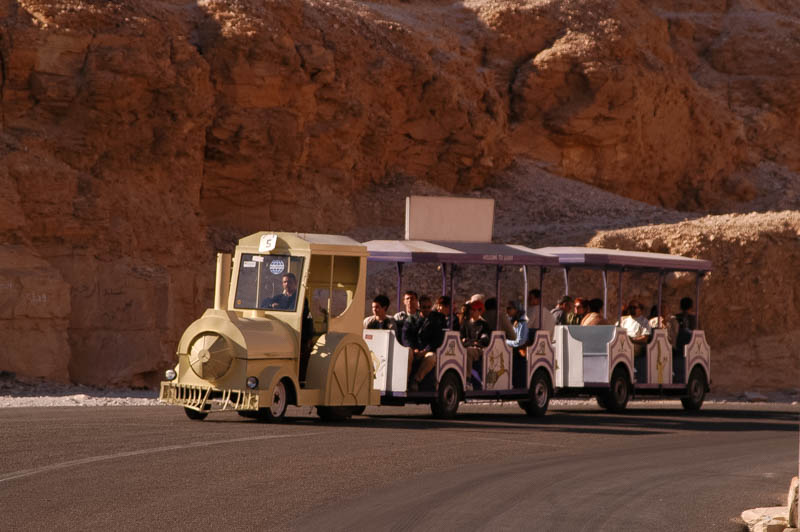Perhaps the destination on the west bank of Thebes is the long, narrow wadi dotted with the burial shafts of the kings of the New Kingdom. The tombs here are hidden — no above-ground monuments to show the way to the treasure to the many tomb robbers. It didn’t work, of course. The tombs were looted anyway, often within months of being sealed.

Tomb robbing was so rampant that many of the tombs were opened and the buried pharaohs were exhumed and moved to two caches, which were discovered in the 19th century. It is from the caches that many of the mummies in the Egyptian Museum of Cairo were taken.
Burials here date from the 18th to the 20th Dynasty. It is likely that the first pharaoh buried here was Tuthmose I, and until Ramesses I the Valley of the Kings contains tombs for pharaohs, queens, and other nobles. The valley itself is called Wadi Biban el-Muluk
Each pharaoh began his tomb immediately and craftsmen worked to dig and decorate the shaft throughout his reign. There are two types of tombs here — early tombs are convoluted and multi-level, while later tombs are straight, deep shafts. The early tombs, from the 18th Dynasty, are usually as series of galleries sinking deeper into the cliffs. Usually a deep pit blocked access to the deeper parts of the tomb (for deterring thieves and catching rainwater, probably) The burial chamber is usually at right angles.

Most of the tombs in the valley have been excavated in the last century. Most of the excavation began in 1902 and continues today — the last find in 1995 revealed perhaps the largest tomb in the valley, KV5, for the sons of Ramesses II.
Damage from tourists has been serious in the last few decades. More people in the tombs have brought in more moisture, and people touching the walls have done more damage. Glass screens have been installed in many tombs. The reliefs are very fragile and touching them is prohibited, as is flash photography. No video is allowed. Check at the kiosk for any closures, as the tombs may close for repairs at any time.
There are over a hundred tombs here, but only a few are open. Tickets can be bought for three tombs at a time, and special tickets are required for Tutankhamun’s tomb. We got a bit “tombed out” — we saw the tombs of Merenptah, Ramesses III, Ramesses IX, Seti II, Tausert, and Thutmose III — although we skipped Tutankhamun’s tomb and instead added the extra three tombs.